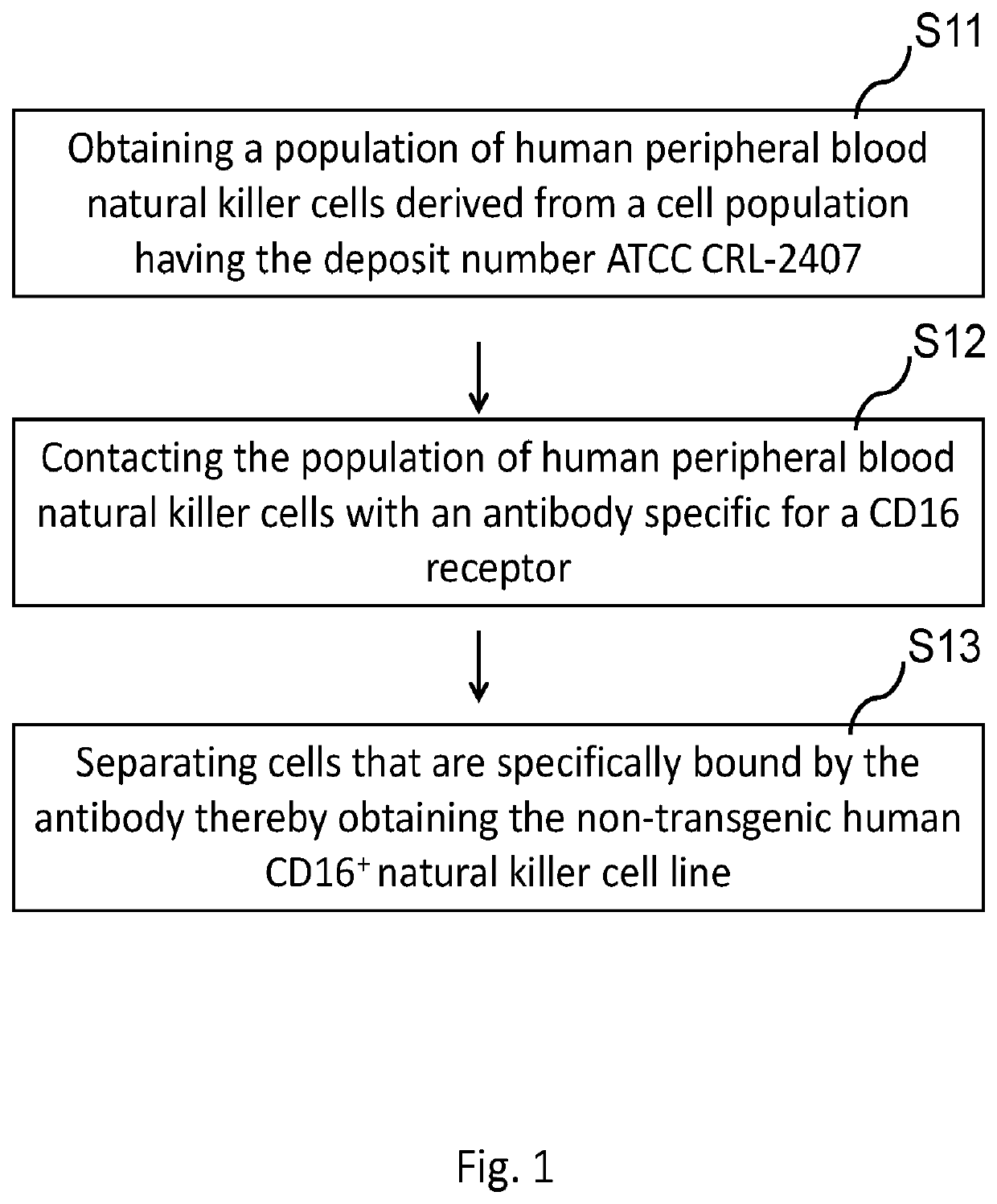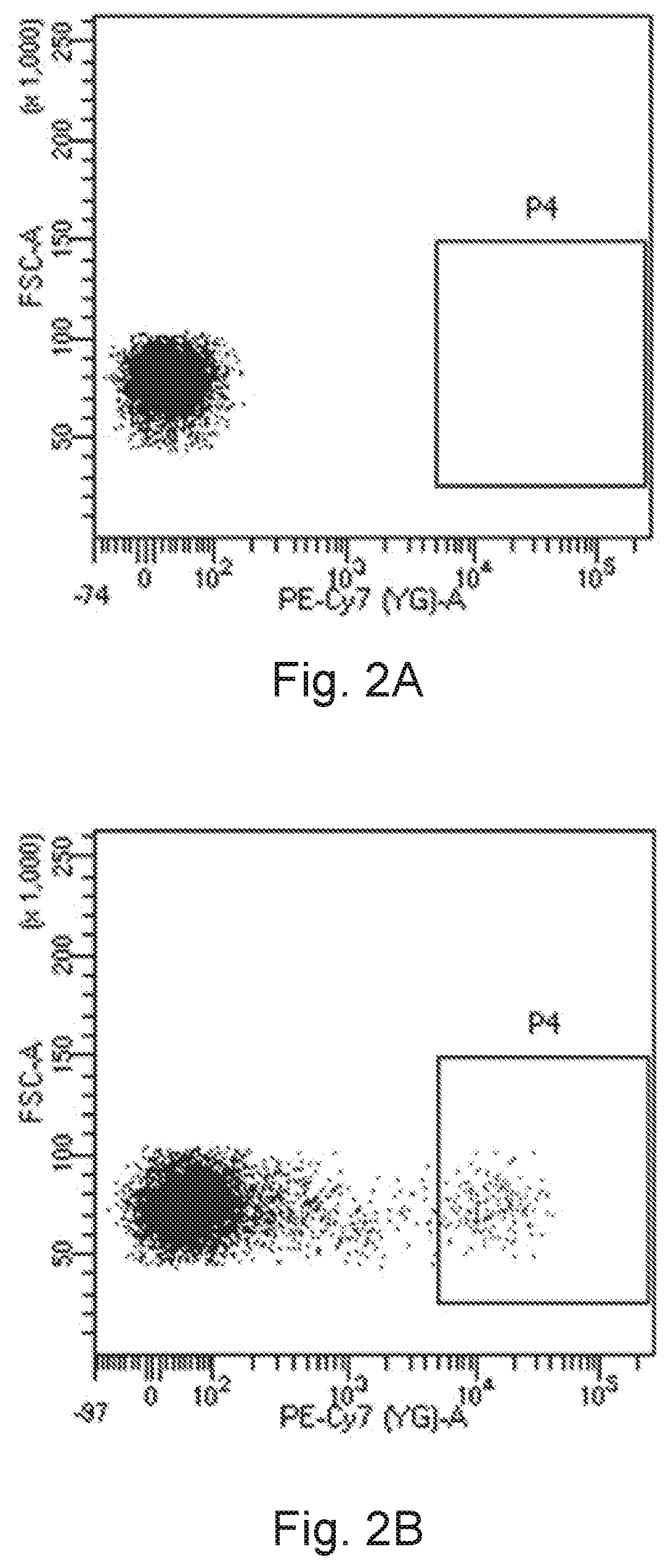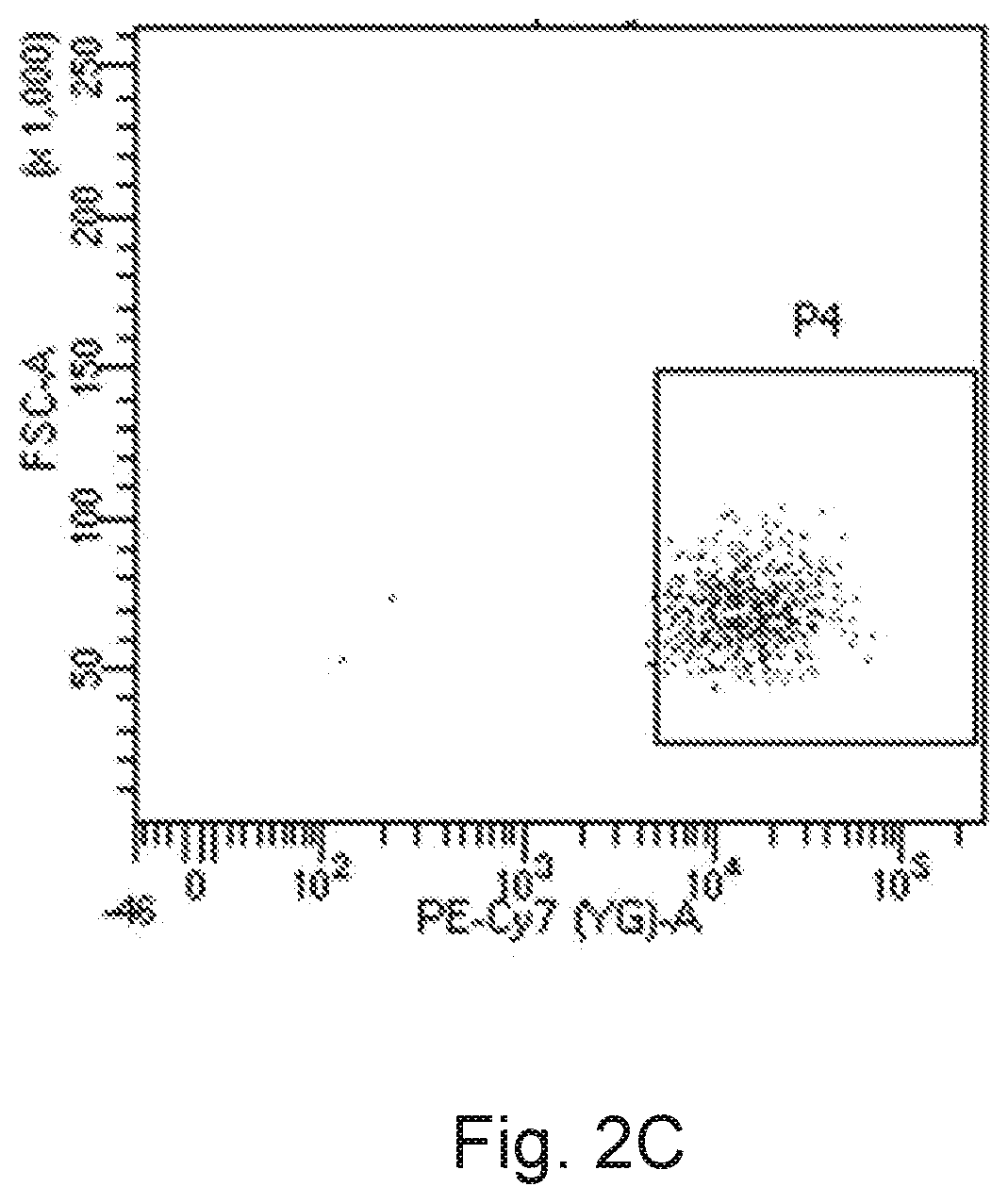A novel cd16+ natural killer cell and a method of culturing cd16+ natural killer cell
a natural killer cell and cd16 technology, applied in cell culture active agents, immunoglobulins, peptides, etc., can solve the problems of inability to stably proliferate cd16 in nk cells, inability to retain primary cd16sup>+/sup> nk cells, and lack of a method capable of stably proliferating cd16
- Summary
- Abstract
- Description
- Claims
- Application Information
AI Technical Summary
Benefits of technology
Problems solved by technology
Method used
Image
Examples
embodiment 2.2
Detecting Cell Viability of the Cultured Cells Obtained from Embodiment 2.1
[0268]Each sample of the cell suspensions, which were obtained by culturing for different days with the culture method disclosed in the embodiments 2.1, was mixed with an equal volume of Trypan blue, and the number of cells and the cell survival rate were observed.
[0269]The experimental results showed that after culturing for 7, 16, 21, 28, 37, 42, 49, 65, 92, 97, 103, 134, 166, 184, and 202 days, the number of cells respectively reached 1.61×106, 1.01×109, 2.53×109, 5.06×109, 1.01×1010, 1.62×1010, 3.24×1010, 1.13×1011, 1.81×1015, 3.25×1016, 6.50×1017, 1.35×1022, 3.24×1027, 1.30×1033, and 1.04×1039. Please refer to FIG. 4. FIG. 4 shows that cell viability was maintained at 84-97% after 7, 16, 21, 28, 37, 42, 49, 65, 92, 97, 103, 134, 166, 184, and 202 days of culture of non-transgenic human CD16+ natural killer cell line. Thus, culturing the non-transgenic human CD16+ natural killer cell line with the culture...
embodiment 3
Cell Condition and Cell Surface Markers
Embodiment 3.1 Long-Term Culture of Non-Transgenic Human CD16+ Natural Killer Cell Line by the Culture Method of the Present Invention
[0270]There are two experimental trials in this embodiment. The first batch of the purified CD16+ cell population and the second batch of the purified CD16+ cell population (the proportions of cells expressing the CD16 receptor in both of the batches were as high as 99%) were sorted by the method of Embodiment 1.1, then the first batch of the purified CD16+ cell population and the second batch of the purified CD16+ cell population were cultured respectively by the culture method of Embodiment 2.1 to obtain the cell suspensions of the first experimental trial and the cell suspensions of the second experimental trial. The first batch of the purified CD16+ cell population was cultured for 35 days in total, while the second batch of the purified CD16+ cell population was cultured for at least a long period of time un...
embodiment 3.2
Detecting the Condition of the Cultured Cells
[0271]Each sample of the cell suspensions, which were obtained at different time points in Embodiment 3.1, was centrifuged; the supernatant was removed, the cells were resuspended in the buffer, then mix with 1 μL of propidium iodide (PI). The cell sorter or flow cytometer was used to detect whether the cells were stained with propidium iodide to determine the percentage of cells that were undergoing apoptosis or have died.
PUM
| Property | Measurement | Unit |
|---|---|---|
| length | aaaaa | aaaaa |
| concentration | aaaaa | aaaaa |
| concentration | aaaaa | aaaaa |
Abstract
Description
Claims
Application Information
 Login to View More
Login to View More - R&D
- Intellectual Property
- Life Sciences
- Materials
- Tech Scout
- Unparalleled Data Quality
- Higher Quality Content
- 60% Fewer Hallucinations
Browse by: Latest US Patents, China's latest patents, Technical Efficacy Thesaurus, Application Domain, Technology Topic, Popular Technical Reports.
© 2025 PatSnap. All rights reserved.Legal|Privacy policy|Modern Slavery Act Transparency Statement|Sitemap|About US| Contact US: help@patsnap.com



